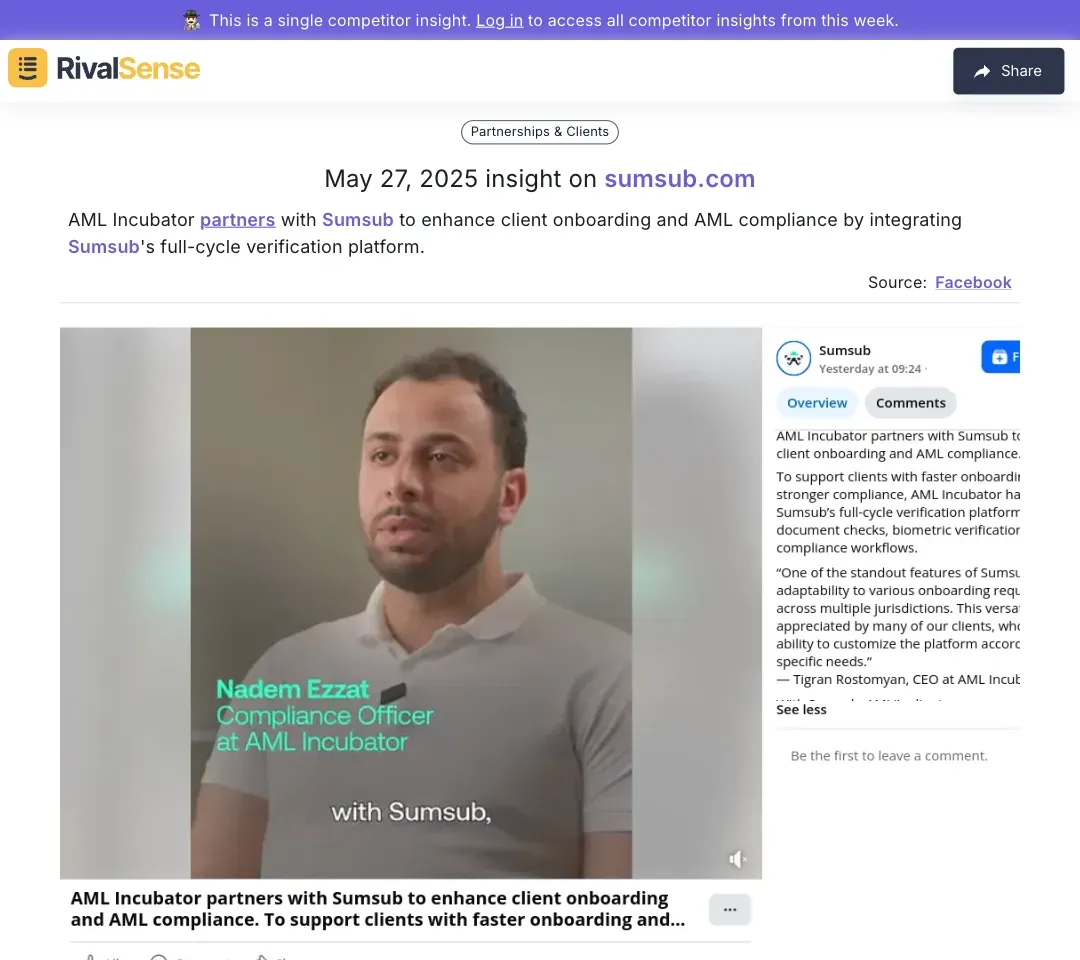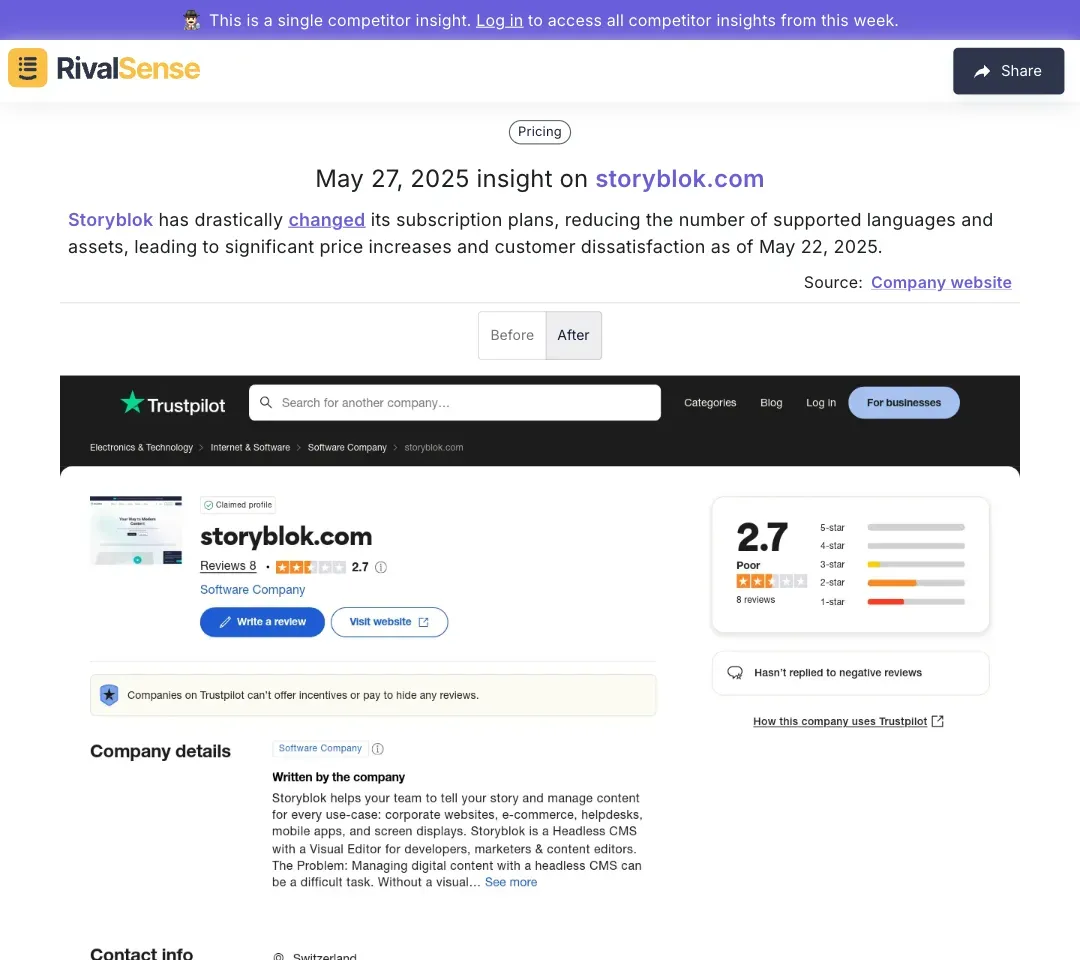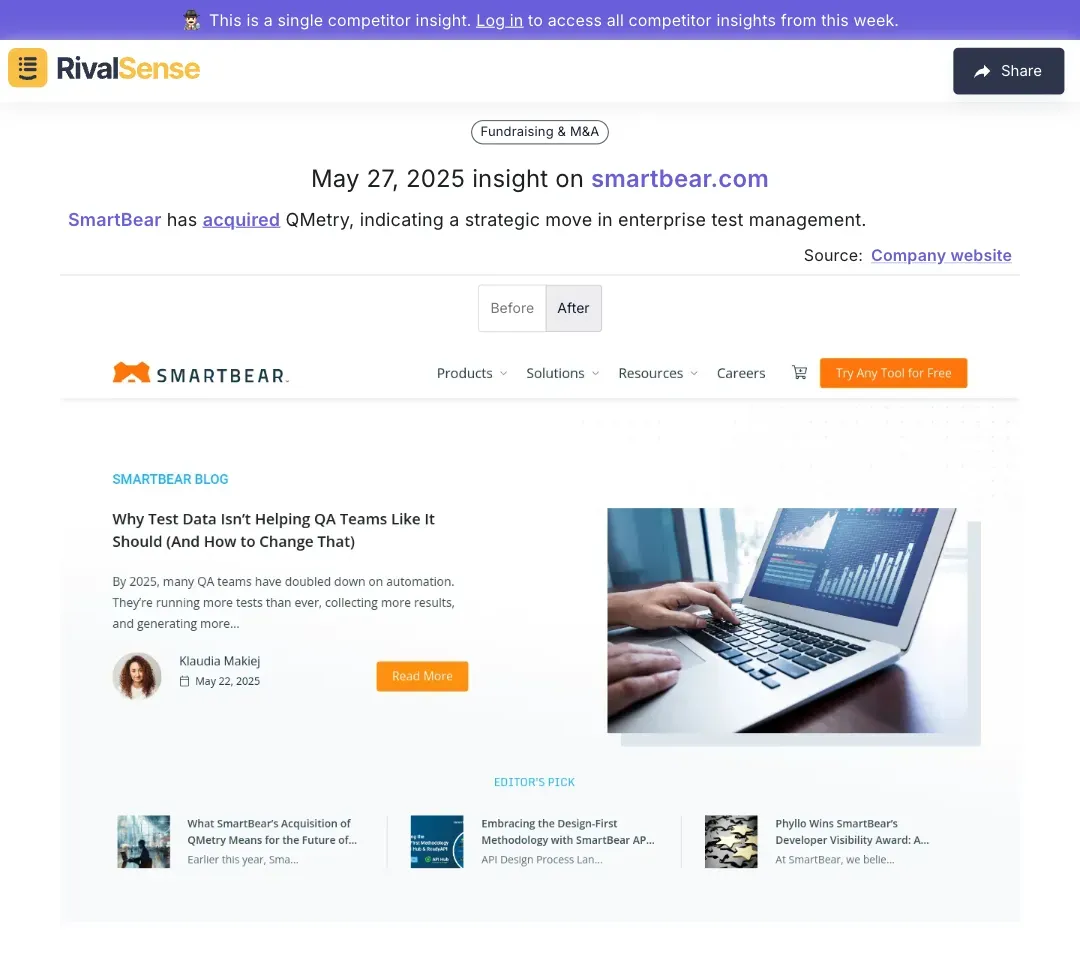How to Analyze Competitor Support Strategies: A Founder's Guide to Winning Customer Loyalty
In today's fast-paced digital landscape, understanding your competitors' support strategies is critical for retaining customers and protecting market share. For B2B leaders, this analysis isn't just about keeping up - it's about discovering strategic advantages in areas like onboarding efficiency and compliance support.
🎯 Why Competitor Support Analysis Matters for B2B Growth
Support strategies directly impact customer lifetime value and referral rates in enterprise sales. By reverse-engineering competitors' approaches, you can:
- Predict churn triggers before they impact your revenue
- Identify compliance gaps in regulated industries
- Benchmark SLAs for enterprise contracts

Example: When AML Incubator partnered with Sumsub for compliance verification, it signaled a shift toward automated onboarding support - crucial intelligence for fintech competitors.
Step 1: Identify Strategic Competitors
Track both current rivals and emerging threats through multiple lenses:
- Product competitors (direct feature overlap)
- Compliance competitors (regulated industries)
- Enterprise aspirants (companies targeting your key accounts)
🚨 Critical Insight: 73% of disruptive competitors emerge from adjacent markets. Use tools like RivalSense to monitor partnership announcements and executive moves across 80+ registries.
Step 2: Decode Support Channel Strategies
Map competitors' support ecosystems with attention to:
| Channel | Enterprise-Grade Features |
|---|---|
| Live Chat | Escalation protocols |
| SLA tracking systems | |
| Phone | VIP routing rules |

Example: Storyblok's recent plan changes reduced language support - a warning sign about potential support capacity issues during renewal cycles.
Step 3: Assess Resolution Quality
Conduct secret shopping with these enterprise-focused criteria:
- Technical Depth: Can frontline support discuss API integrations?
- Compliance Awareness: Do they reference specific regulations?
- Escalation Paths: How quickly can they access engineering teams?
✅ Checklist for Decision Makers:
- [ ] Test holiday/weekend response protocols
- [ ] Verify multilingual support capacity
- [ ] Document escalation tree depth
Step 4: Analyze Feedback Loops
Track sentiment across:
- Contract renewal forums (Gartner Peer Insights)
- Implementation portals (TrustRadius)
- Regulatory filings (SEC complaints)

Example: SmartBear's QMetry acquisition revealed plans to consolidate enterprise testing support - critical intel for SaaS companies negotiating enterprise contracts.
Step 5: Benchmark & Optimize
Create competitive scorecards tracking:
1. Critical Issue Resolution Time
2. Compliance Audit Support
3. Executive Escalation Availability
Pro Tip: Use regulatory change tracking in RivalSense to anticipate new support requirements before competitors adapt.
Step 6: Implement AI-Powered Enhancements
Prioritize technologies that address enterprise pain points:
- Predictive Ticket Routing using account health data
- Automated Compliance Logging for audit trails
- Contract-Specific Knowledge Bases with tiered access
🏆 Differentiate Your Support Experience
Continuous competitor analysis helps you:
- Anticipate enterprise clients' evolving needs
- Validate premium pricing through superior support
- Avoid costly compliance missteps
Ready to transform support into your competitive advantage? Try RivalSense Free to automatically track competitors' support strategy changes, with weekly reports delivered straight to your leadership team. Get your first competitor analysis today - before your next renewal cycle begins.
📚 Read more
👉 🔍 Insurance Competitor Weakness Identification: Templates, Frameworks & Actionable Strategies
👉 How Marsh Redefined Real Estate Acquisitions – And What Your Business Can Learn
👉 Outsmart Competitors: Leverage Tech Trends & Real-Time Insights for Strategic Wins
👉 🚫 Avoid These 4 Costly Mistakes in Competitor Thought Leadership Analysis
👉 Decoding Competitor Moves: How to Predict Event Participation & IP Strategies
